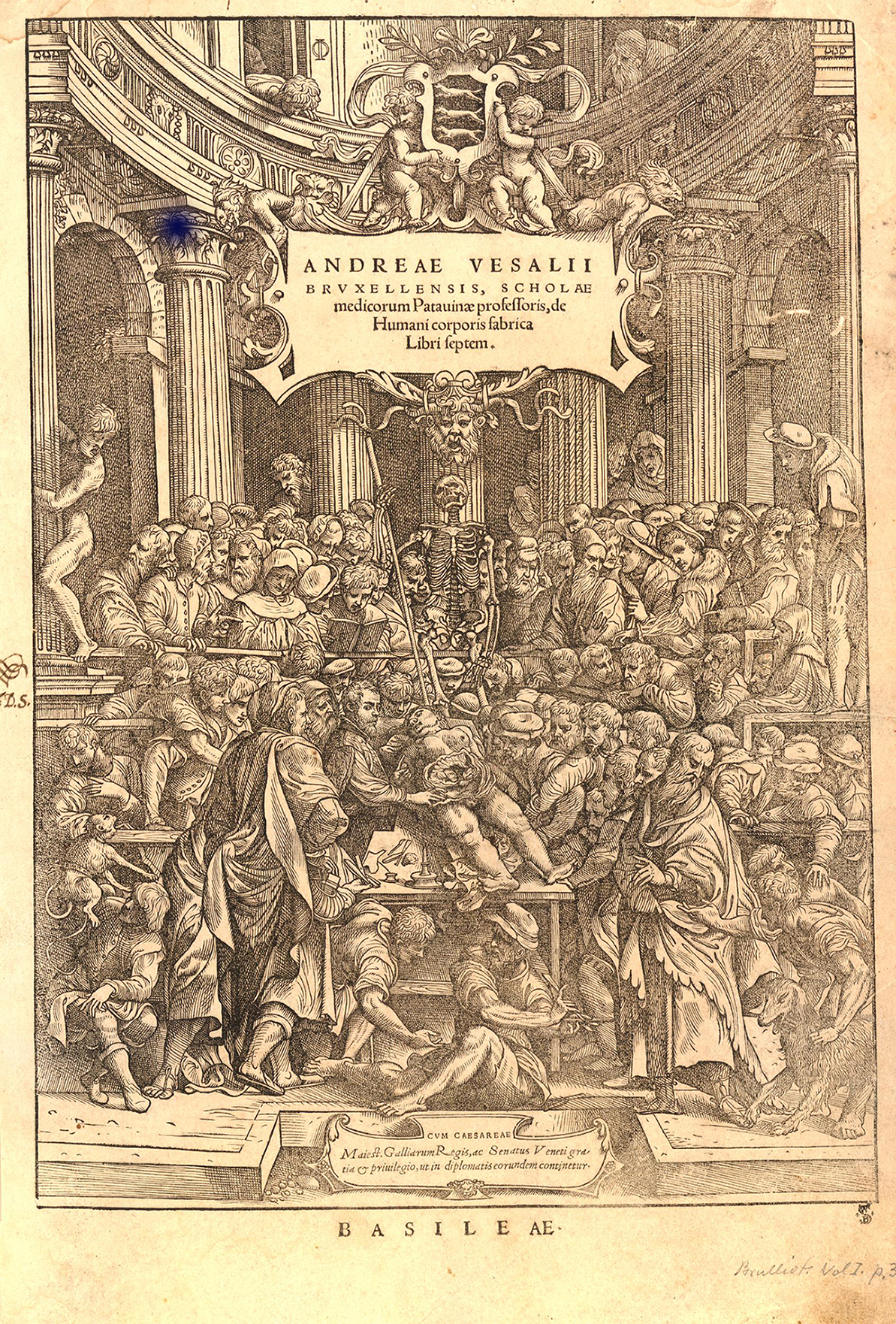ABOUT THE EXHIBIT
ANDREAS VESALIUS (1514-1564)
Pre-Vesalian and post-Vesalian—that is how medical historians and students divide the history of anatomy. Those terms, echoing the import of other transitional eras, like BC and AD, reveal the significance of a man whose body of work changed not only how medicine was taught and practiced, but also how we as humans see our own bodies and place in this world. Andreas Vesalius’s rapid rise as a physician and anatomist in Renaissance Europe signified a revival of classical humanist thought grounded in ancient Greece and Rome, and a revival of the classical scientific method of observation. Not willing as many of his peers were to blindly accept what the ancients had to say, Vesalius honored his classical forebears by disagreeing with, elaborating on, and adding to their medical knowledge. The culmination of his work, De humani corporis fabrica (Of the structure of the human body) is one of the most influential books on human anatomy ever written.
Vesalius revolutionized the study and practice of medicine by his careful description of the anatomy of the human body. Basing his observations on dissections he performed himself, he authored the Fabrica, the first comprehensive textbook of anatomy. Published in 1543, it extensively and accurately described, and illustrated, the human body like no other written work in human history. Most likely illustrated by colleague Jan Stephan a Calcar from the Venetian artist Titian’s workshop, the Fabrica is most widely known for its illustrations, where skeletons and bodies pose in scenic pastoral settings.
In this exhibit, the Henry R. Winkler Center for the History of the Health Professions at the University of Cincinnati Libraries celebrates this seminal work and the life of its author. We hope you enjoy its text, images, scholarly works, multimedia presentations, and much more.
